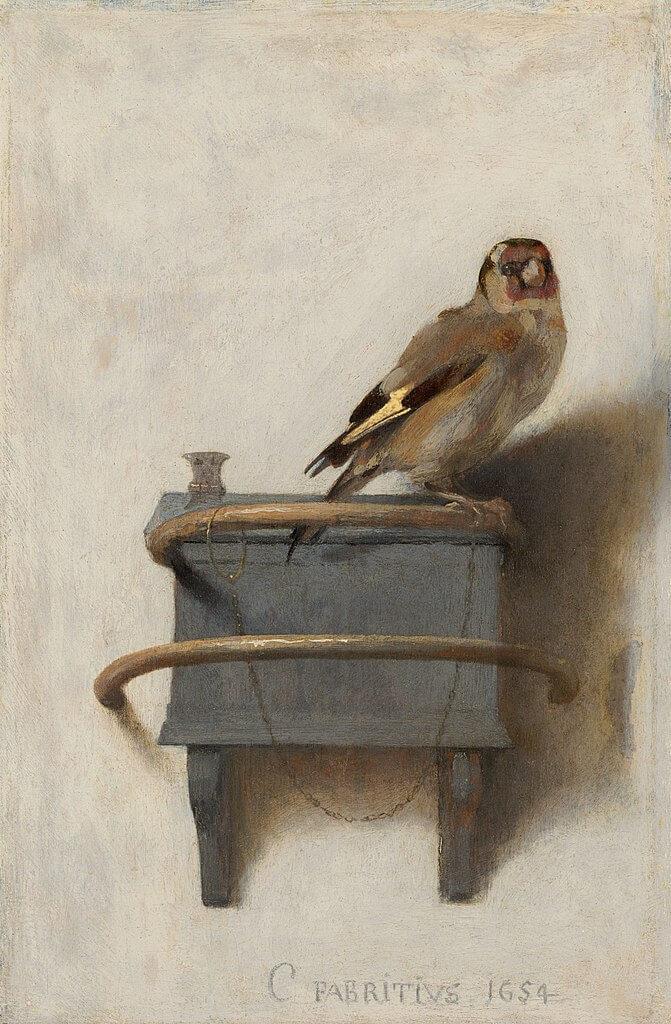
"The Goldfinch" by Fabricius: a picture of a forgotten genius
Contents:
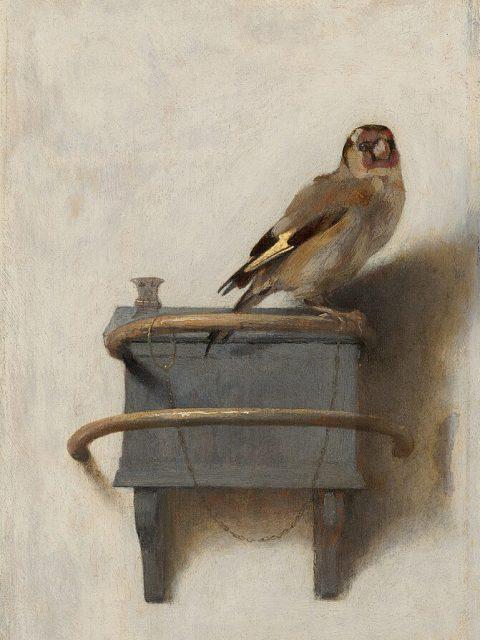
“He (Fabricius) was a student of Rembrandt and a teacher of Vermeer ... And this tiny canvas (the painting “Goldfinch”) is the very missing link between them.”
Quote from Donna Tartt's The Goldfinch (2013)
Before the publication of Donna Tartt's novel, few people knew such an artist as Fabricius (1622-1654). And even more so his small painting "Goldfinch" (33 x 23 cm).
But it was thanks to the writer that the world remembered the master. And became interested in his painting.
Fabricius lived in the Netherlands in the XNUMXth century. IN Golden Age of Dutch Painting. At the same time, he was very talented.
But they forgot about him. This art critics consider it a milestone in the development of art and dust particles are blown off the Goldfinch. And ordinary people, even art lovers, know little about him.
Why did this happen? And what is special about this little "Goldfinch"?
What is the unusual "Goldfinch"
A bird perch is attached to a light, bare wall. A goldfinch sits on the top bar. He is a wild bird. A chain is attached to its paw, which does not allow it to take off properly.
Goldfinches were a favorite pet in Holland in the XNUMXth century. Since they could be taught to drink water, which they scooped up with a small ladle. It entertained bored hosts.
The “Goldfinch” of Fabricius belongs to the so-called fake paintings. They were very popular at that time in Holland. It was also entertainment for the owners of the picture. Impress your guests with the 3D effect.
But unlike many other tricks of the time, Fabricius's work has one significant difference.
Look closer at the bird. What is unusual about her?
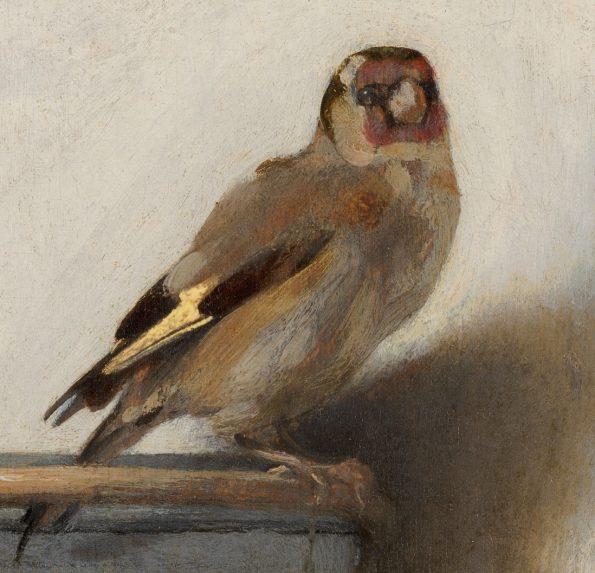
Broad, careless strokes. They seem to be not fully drawn, which creates the illusion of plumage.
In some places, the paint is slightly shaded with a finger, and there are barely visible spots of lilac paint on the head and breast. All this creates the effect of defocusing.
After all, the bird is supposedly alive, and for some reason Fabricius decided to write it out of focus. As if the bird is moving, and from this the image is slightly smeared. Why don't you impressionism?
But then they didn’t know about the camera and about this effect of the picture too. However, the artist intuitively felt that this would make the image more alive.
This greatly distinguishes Fabritius from his contemporaries. Especially those who specialize in trickery. They, on the contrary, were sure that realistic means clear.
Look at the typical trick of the artist Van Hoogstraten.
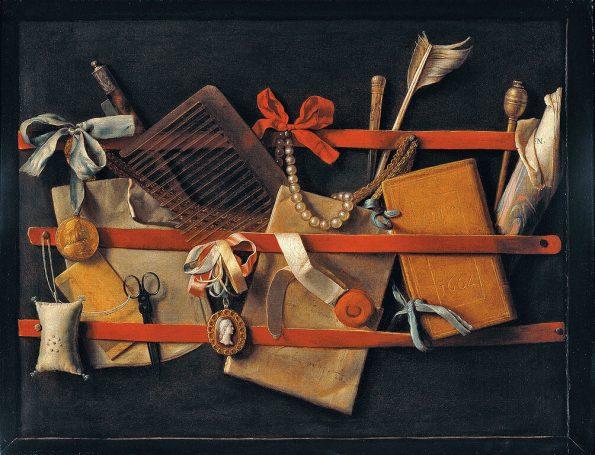
If we zoom in on the image, the clarity will remain. All strokes are hidden, all objects are written out subtly and very carefully.
What is the peculiarity of Fabricius
Fabricius studied in Amsterdam with Rembrandt 3 years. But he quickly developed his own style of writing.
If Rembrandt preferred to write light on dark, then Fabricius painted dark on light. "Goldfinch" in this regard is a typical picture for him.
This difference between teacher and student is especially noticeable in portraits, the quality of which Fabricius was not inferior to Rembrandt.
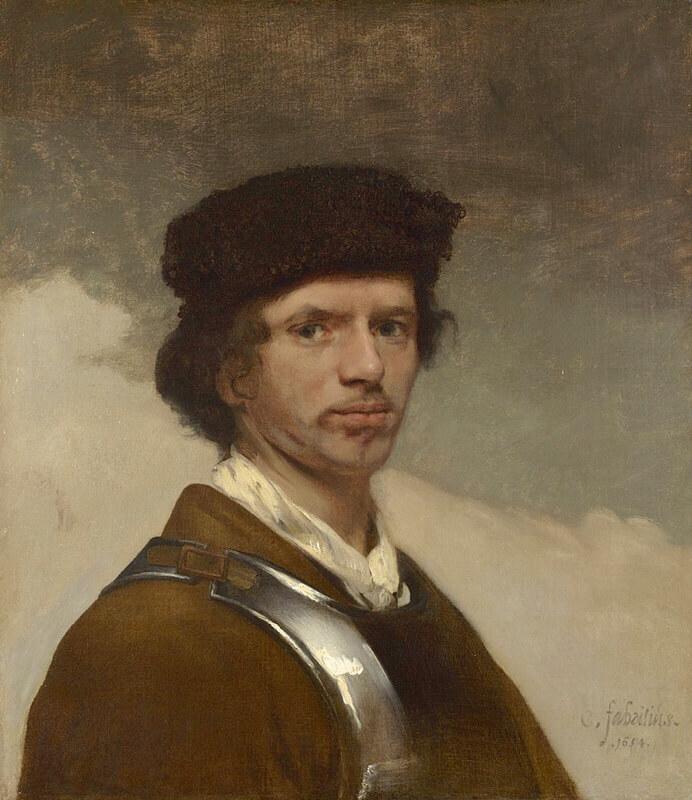
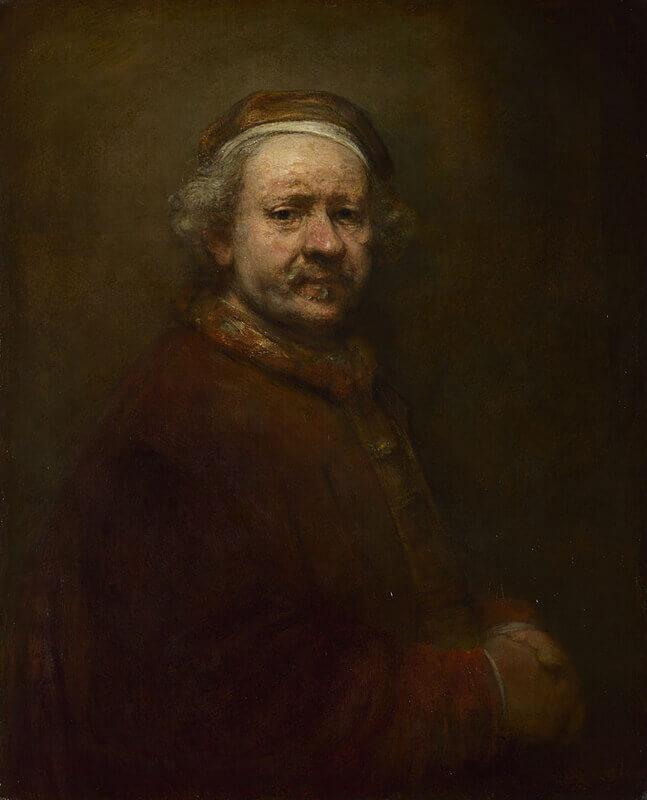
Left: Karel Fabricius. Self-portrait. 1654 National Gallery of London. Right: Rembrandt. Self-portrait. 1669 Ibid.
Rembrandt did not like daylight. And he created his own world, woven from an surreal, magical glow. Fabricius refused to write in this manner, preferring sunlight. And he recreated it very skillfully. Just look at the Goldfinch.
This fact speaks volumes. After all, when you learn from a great master, recognized by everyone (even then recognized), you have a great temptation to copy him in everything.
So did many of the students. But not Fabricius. This "stubbornness" of his speaks only of a huge talent. And about wanting to go your own way.
Fabritius's secret, which is not customary to talk about
And now I will tell you what art critics do not like to talk about.
Perhaps the secret of the incredible vitality of the bird lies in the fact that Fabricius was ... a photographer. Yes, a XNUMXth century photographer!
As I already wrote, Fabricius wrote the carduelis in an extremely unusual way. A realist would depict everything very clearly: every feather, every eye.
Why does an artist add a photo effect as a partially blurred image?
⠀⠀
I understood why he did this after watching Tim Jenison's 2013 Tim's Vermeer.
The engineer and inventor unraveled the technique owned by Jan Vermeer. I wrote about this in more detail in an article about the artist “Jan Vermeer. What is the uniqueness of the master.
⠀⠀
But what applies to Vermeer applies to Fabricius. After all, he once moved from Amsterdam to Delft! The city where Vermeer lived. Most likely, the latter taught our hero the following.
⠀⠀
The artist takes a lens and places it behind him so that the desired object is reflected in it.
⠀⠀
The artist himself, on a makeshift tripod, captures the reflection in the lens with a mirror and holds this mirror in front of him (between his eyes and the canvas).
⠀⠀
Picks up the color the same as in the mirror, working on the border between its edge and the canvas. As soon as the color is clearly chosen, then visually the border between the reflection and the canvas disappears.
⠀⠀
Then the mirror moves slightly and the color of another micro-section is selected. So all the nuances were transferred and even defocusing, which is possible when working with lenses.
In fact, Fabricius was ... a photographer. He transferred the projection of the lens to the canvas. He did NOT choose colors. Didn't choose the forms. But masterfully worked with tools!
⠀⠀
Art critics do not like this hypothesis. After all, so much has been said about the brilliant color (which the artist did not choose), about the created image (although this image is real, thoroughly conveyed, as if photographed). Nobody wants to take back their words.
However, not everyone is skeptical about this hypothesis.
The famous contemporary artist David Hockney is also sure that many Dutch masters used lenses. And Jan Van Eyck wrote his "The Arnolfini Couple" in this way. And even more so Vermeer with Fabricius.
But this does not detract from their genius. After all, this method involves the choice of composition. And you have to work with paints skillfully. And not everyone can convey the magic of light.

The tragic death of Fabricius
Fabricius died tragically at the age of 32. This happened for reasons completely beyond his control.
In the event of a sudden invasion, every Dutch city had a gunpowder store. In October 1654, an accident occurred. This warehouse has blown up. And with it, a third of the city.
Fabricius at this time was working on a portrait in his studio. Many of his other works were also there. He was still young, and the work was not so actively sold.
Only 10 works survived, as they were at that time in private collections. Including "Goldfinch".
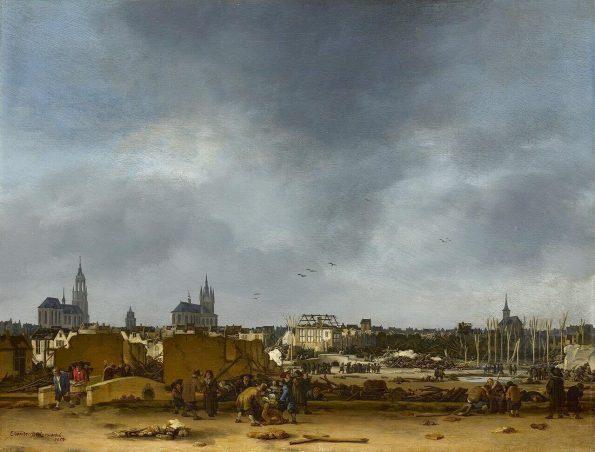
If not for the sudden death, I am sure that Fabricius would have made many more discoveries in painting. Maybe he would have accelerated the development of art. Or maybe it would have gone a little differently. But it didn't work out...
And Fabritius' Goldfinch was never stolen from a museum, as described in Donna Tartt's book. It hangs safely in the gallery of The Hague. Next to the works of Rembrandt and Vermeer.
***
Comments other readers see below. They are often a good addition to an article. You can also share your opinion about the painting and the artist, as well as ask the author a question.
English version of the article
Leave a Reply